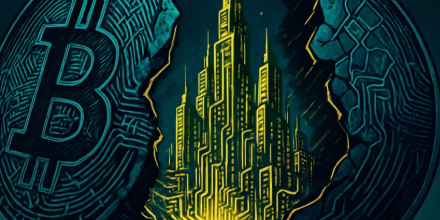Falcon Finance Expands USDf Stablecoin With Global Fiat Access and Real-World Asset Redemptions
Contents
Toggle- Quick Breakdown
- Falcon Finance pushes global adoption of USDf
- Gold redemption and tokenized assets
- 2026 Roadmap: institutional and RWA expansion
- Milestones and stability backing
Quick Breakdown
- Falcon Finance to launch fiat rails for USDf in LATAM, Turkey, MENA, Europe, and the U.S. in 2025.
- Users in the UAE will gain physical gold redemption options for USDf this year.
- By 2026, Falcon Finance will introduce a Real-World Asset engine to tokenize bonds, credit and expand institutional products.
Falcon Finance pushes global adoption of USDf
Falcon Finance is broadening the reach of its overcollateralized synthetic dollar, USDf, by rolling out fiat on- and off-ramps across Latin America, Turkey, MENA, Europe, and the United States. The move comes as part of the protocol’s newly released whitepaper , which lays out an expanded roadmap focused on real-world utility, institutional integration, and diversified yield strategies.
The Falcon Finance Whitepaper has been updated.
Here’s what you need to know about $FF and the protocol it powers:
Falcon Finance is a synthetic dollar protocol built for resilience and sustainable yield.
Yields come from diversified strategies: basis spreads, positive and… pic.twitter.com/woK8sHhfn1
— Falcon Finance 🦅🟠 at KBW🇰🇷 (@FalconStable) September 22, 2025
Gold redemption and tokenized assets
In 2025, Falcon Finance will allow users in the UAE to redeem USDf for physical gold, bridging stablecoins with tangible assets. Beyond gold, USDf will also be usable for tokenized U.S. Treasuries, stablecoins, and select cryptocurrencies—strengthening its position as a versatile digital dollar for both retail and institutional users.
2026 Roadmap: institutional and RWA expansion
Looking ahead, Falcon Finance plans to launch a modular Real-World Asset (RWA) engine in 2026, enabling tokenization of corporate bonds, private credit, and other financial instruments. Gold redemption services will also extend to other MENA hubs and Hong Kong, while institutional-grade USDf investment products will be introduced to deepen market adoption.
Milestones and stability backing
The expansion follows major milestones for the project. USDf recently surpassed $1 billion in circulation, placing it among the top ten Ethereum-based stablecoins by market cap. The protocol also conducted its first “live mint” of USDf against a tokenized U.S. Treasury fund with a 116% overcollateralization ratio, independently verified by ht.digital.
USDf is minted when users deposit collateral such as stablecoins, leading cryptocurrencies, or tokenized RWAs. For assets like BTC or ETH, an overcollateralization buffer ensures stability against market volatility. Holders can stake USDf to generate sUSDf, a yield-bearing token that earns income through strategies like funding rate arbitrage.
Meanwhile, in April, Falcon Finance announced the integration of its yield-bearing stablecoin, $sUSDf, into Pendle’s decentralized finance (DeFi) platform, opening up new opportunities for users to generate stable on-chain yields.
Disclaimer: The content of this article solely reflects the author's opinion and does not represent the platform in any capacity. This article is not intended to serve as a reference for making investment decisions.
You may also like
IOTA partners with top global institutions to build Africa’s “digital trade superhighway”: a new $70 billion market is about to explode
Africa is advancing trade digitalization through the ADAPT initiative, integrating payment, data, and identity systems with the goal of connecting all African countries by 2035. This aims to improve trade efficiency and unlock tens of billions of dollars in economic value. Summary generated by Mars AI. The accuracy and completeness of this summary are still being iteratively updated.

Panic selling is all wrong? Bernstein: The real bull market structure is more stable, stronger, and less likely to collapse
Bitcoin has recently experienced a significant 25% pullback. Bernstein believes this was caused by market panic over the four-year halving cycle. However, the fundamentals have changed: institutional funds such as spot ETF are absorbing the selling pressure, and the structure of long-term holdings is more stable. Summary generated by Mars AI. The accuracy and completeness of this content are still being iteratively improved.

Young Bitcoin holders panic sell 148K BTC as analysts call for sub-$90K BTC bottom

Rare Bitcoin futures signal could catch traders off-guard: Is a bottom forming?

